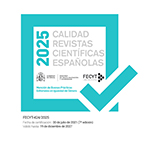Language
Information
Select a number
Keywords
Make a Submission
Search
Amaltea. Revista de mitocrítica
e-ISSN 1989-1709 | ISSN-L 1989-1709
https://dx.doi.org/10.5209/AMAL
© 2025. Universidad Complutense de Madrid
Ediciones Complutense












